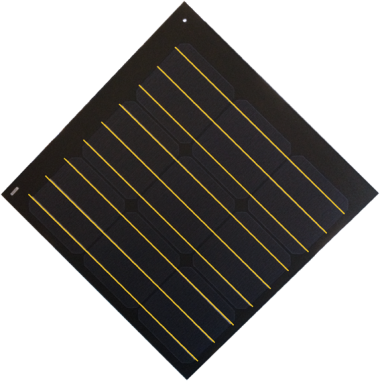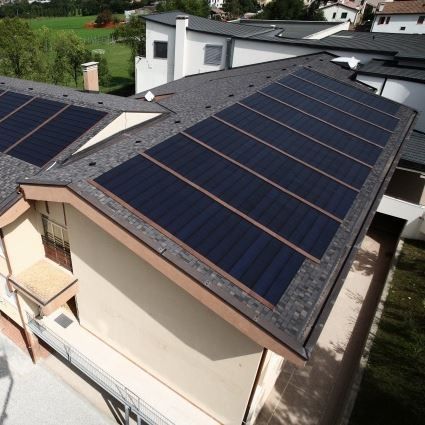
The cost of solar installations has been substantially reduced over the past 10 years. Many owners of private homes would gladly increase their energy independence with their help.
The cost of solar installations has been substantially reduced over the past 10 years. Many owners of private homes would gladly increase their energy independence with their help. But the decision is hampered by several arguments against: the solar power stations are usually served by a large area, which is necessary for the installation of standard panels, and the laboriousness of regular maintenance of them.
Why is that? In private ownership, as a rule, there are small plots of land:
- Spending a whole field on a solar system means to deprive yourself of a good piece of garden.
- The only unoccupied, well-lit sunny place on the farm is the roof. But cleaning the panels twice a year, and even at altitude, is difficult.
In addition, the standard panel is a shield about 1 meter wide and 1.6 meters long. It can not be cut - the flexibility of mounting on the roof is minimized. At the same time, the specific weight of a square meter is about 13 kg — and this is an additional weight, without taking into account the load from ordinary roofing materials and fastening fixtures. Before installing photovoltaic cells in most cases, it is necessary to strengthen the load-bearing structure of the roof, which is associated with a large expenditure of time, labor and money.
Leading world manufacturers have developed an innovative solution - photovoltaic tiles. According to their estimates, the new technology will greatly contribute to the spread of green technologies among private users.

What the difference between photovoltaic tiles and classic solar power panels
1. This is a complete roofing material
Manufacturers offer no additional hinged components, but a ready-made photovoltaic roof technology. It is:
- reliably protects the house from weather phenomena - rain, hail, snow;
- can withstand extreme high and low ambient temperatures;
- is resistant to strong winds, including storm gusts of the wind.
The specific weight of a square meter of galvanic tile is about 14 kg. For comparison, a slate sheet of a similar area weighs from 12 to 18 kg. It is not necessary to further strengthen the load-bearing beams.
2. Size and flexibility of the installation
Photovoltaic tiles repeat the configuration of piece roofing. The area of one unit does not usually exceed a quarter of a square meter.
If some sections of the roof are in shading, stubs are used — most manufacturers offer elements, which is similar in appearance, but without built-in photocells. The roof will be the same in appearance, but cheaper than if you completely pave it with photovoltaic tiles.
3. Appearance
The feature of solar tiles is a glare-free surface that mimics classic materials. Different colors and ways of styling are available. The technology is quite compatible:
- with the ancient stylistics of monuments of architecture;
- classical design of residential buildings and offices;
- modern architectural styles.
Green electricity can be obtained from any building without compromising the compositional idea.
4. High efficiency
Photovoltaic tiles produce electricity with a productivity of more than 60% even on cloudy days.
For normal operation of photovoltaic tiles, cooling is necessary. Air from the ventilation cavities is used for heating water and heating the house. This further enhances the efficiency of the technology.
5. Simple operation
The developers took into account that for stable operation the photocells should be clean. Photovoltaic tile is self-cleaning with rainwater. This is facilitated by a frameless structure and a smooth outline.
6. High reliability and durability
The manufacturer’s declared service life exceeds 50 years. During this period, the effectiveness is not less than 80% of the initial value.
If you are interested in the idea of a photovoltaic roof - contact us. The company "Karbon CNS" installs solar power plants of any type on a turn-key basis. Our experts will appreciate the potential of your house, pick up the equipment, calculate the cost, and carry out a qualified installation.









